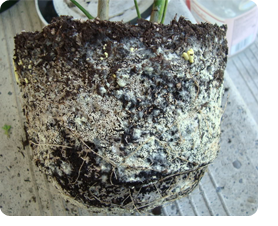How to keep mould off household plants. They’re beautiful and help keep your indoor air clean — but mould loves them. The moist soil in indoor plants is a perfect breeding ground for mould. Once the mould colonizes it spreads throughout an indoor environment. Instead of getting rid of your plants, try adding a bit of Taheebo tea to the water you give to your houseplants. The oil of this tree, which withstands fungi even in rain forests, helps hinder mold growth in plant soil and can be found at natural food stores. Sprinkling a small amount cinnamon on the soil which is a natural fungicide.
 Pruning and or repositioning plants exposing the soil to more UV sunlight will work to reducing mould. The UV will naturally produce hydroxyls that kill moulds. For places that lack sunlight, installing an mr natural Hydroxyl generator is very beneficial.
Pruning and or repositioning plants exposing the soil to more UV sunlight will work to reducing mould. The UV will naturally produce hydroxyls that kill moulds. For places that lack sunlight, installing an mr natural Hydroxyl generator is very beneficial.
Finally, educate yourself on your region’s climate — be it the cold and wet Northeast, the hot and wet South, the hot and dry Southwest, or the cold and dry West — and how it responds to moisture. There is no one-size-fits-all solution when it comes to mold prevention. Knowing what works for your climate and your home is an important first step.
Commercial Greenhouses
Commercial greenhouses are optimizing produce production using hydroxyls. Maximize performance with pure clean air and less airborne pollutants and contaminants.
- No mould
- Drastic reduction of insect infestations
- Improved yields
- Healthier and heartier plant structures
- Reduction in chemicals
- Cleaner air for staff
- Longer lasting, fresher produce
Contact mr natural™ to discuss helpful solutions or services.
Chaetomium Species Chaetomium species are found worldwide in soil, dung, or decaying plants. Most species are prolific producers of the enzyme cellulase that breaks down cellulose. Destruction of paper and other…
Ion generators charge particles with a corona prior to their removal on collector plates or indoor surfaces and also emit ozone, which can react with terpenes to yield secondary organic aerosol, carbonyls,…
Salts and minerals leaching out of concrete basements or walls form a white, powdery crystals called efflorescence. Sometimes it may be difficult to visually distinguish between efflorescence and mold. However,…
The process of spoiling is a natural part of the life cycle of all foods, and it's easy to detect by smell, taste, feel, or sight. Although rotting is a…
After decades of toxic fluoride being added to public water supplies without the public’s consent, we now have significant validation that this practice needs to be stopped. The…
Fluoride is a cumulative toxin, which means the more exposure you get, and the longer you get it, the worse your symptoms are likely to be. This is true even…
Hydroxyl free radical chemistry is very different from other cleaning technologies... Unlike ozone, atmospheric hydroxyls are safe for people, animals, plants and all sensitive materials like rubber, plastic, leather, vinyl, electronics,…
Contractors have long relied upon ozone, foggers, masking agents, filters and chemicals for deodorization. But the hydroxyl generator is a new technology that may be preferable to all of…
Plants with Mould Plants with mould culturing in the soils will affect indoor air quality. How to keep mould off household plants. They're beautiful and help keep your indoor air…
The science has never been clearer. Flaxseed is one of the top most powerful medicinal foods and may protect against dozens of life-threatening health conditions. Many of us have…
 Pruning and or repositioning plants exposing the soil to more UV sunlight will work to reducing mould. The UV will naturally produce hydroxyls that kill moulds. For places that lack sunlight, installing an mr natural Hydroxyl generator is very beneficial.
Pruning and or repositioning plants exposing the soil to more UV sunlight will work to reducing mould. The UV will naturally produce hydroxyls that kill moulds. For places that lack sunlight, installing an mr natural Hydroxyl generator is very beneficial.


